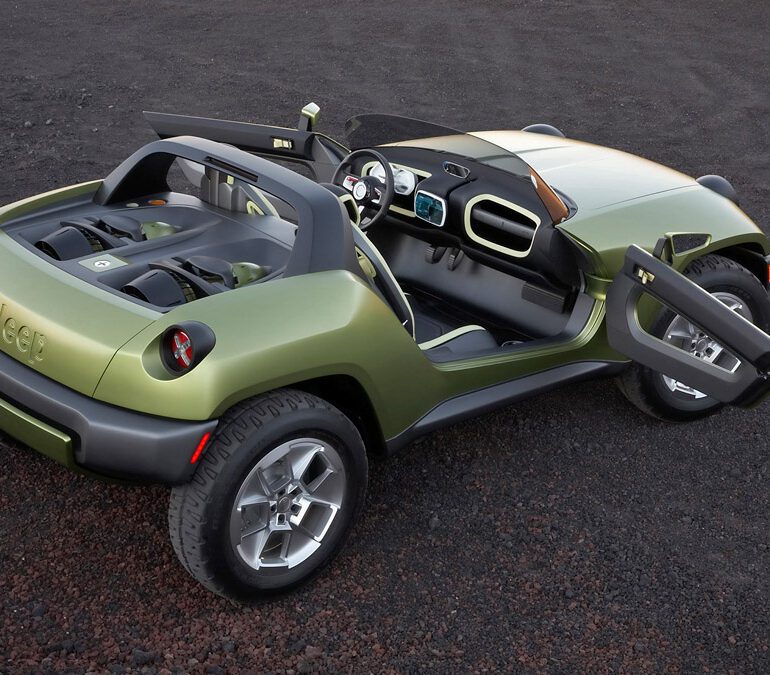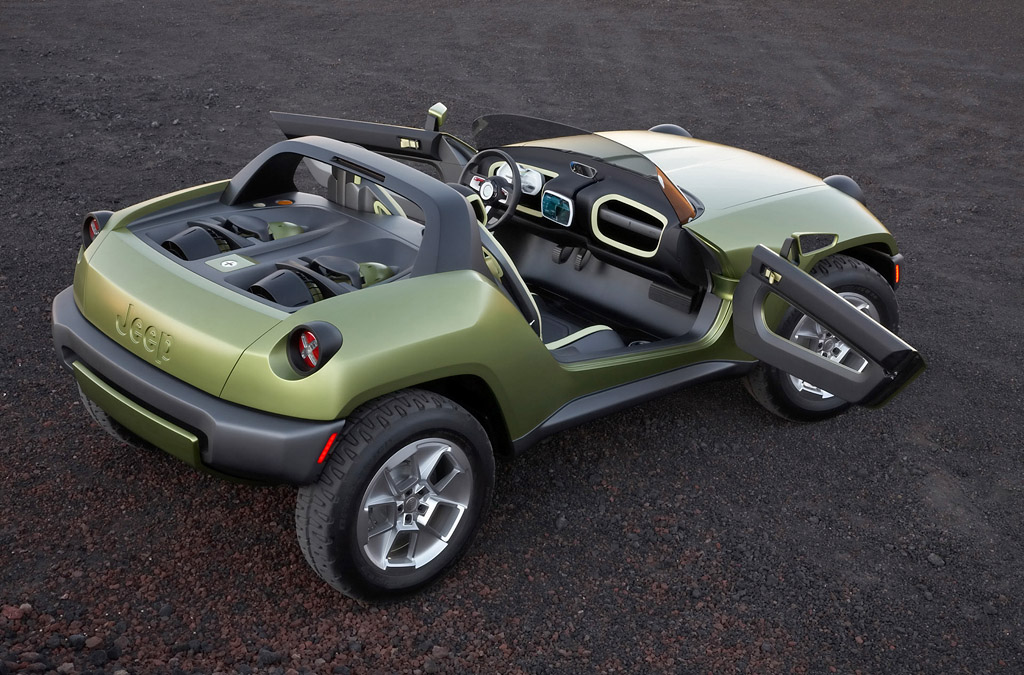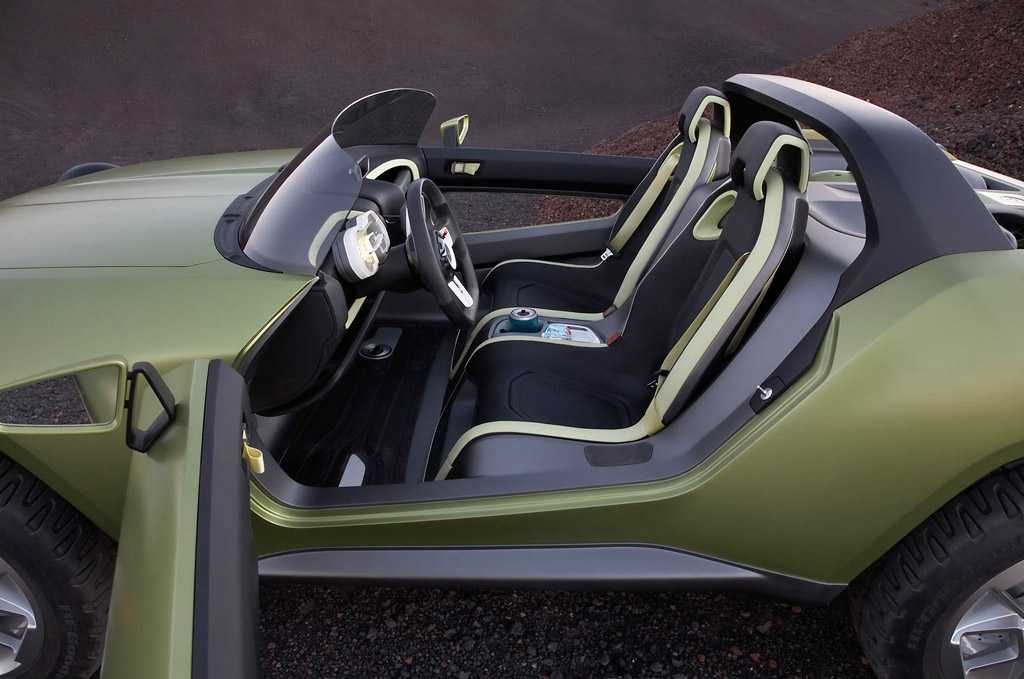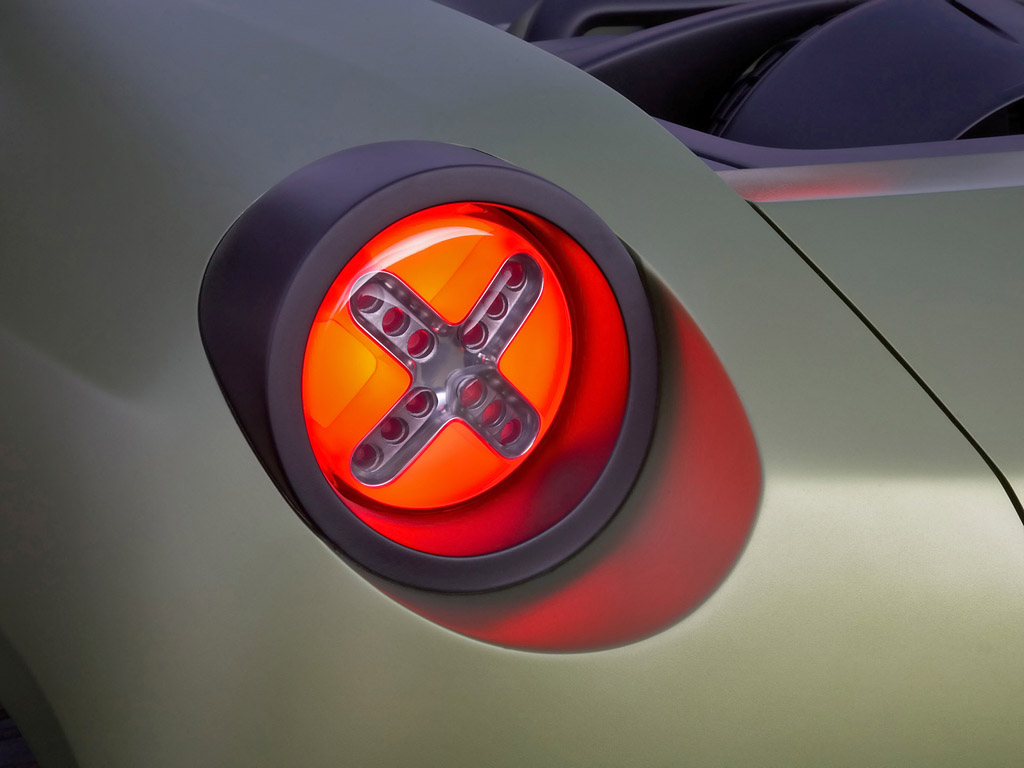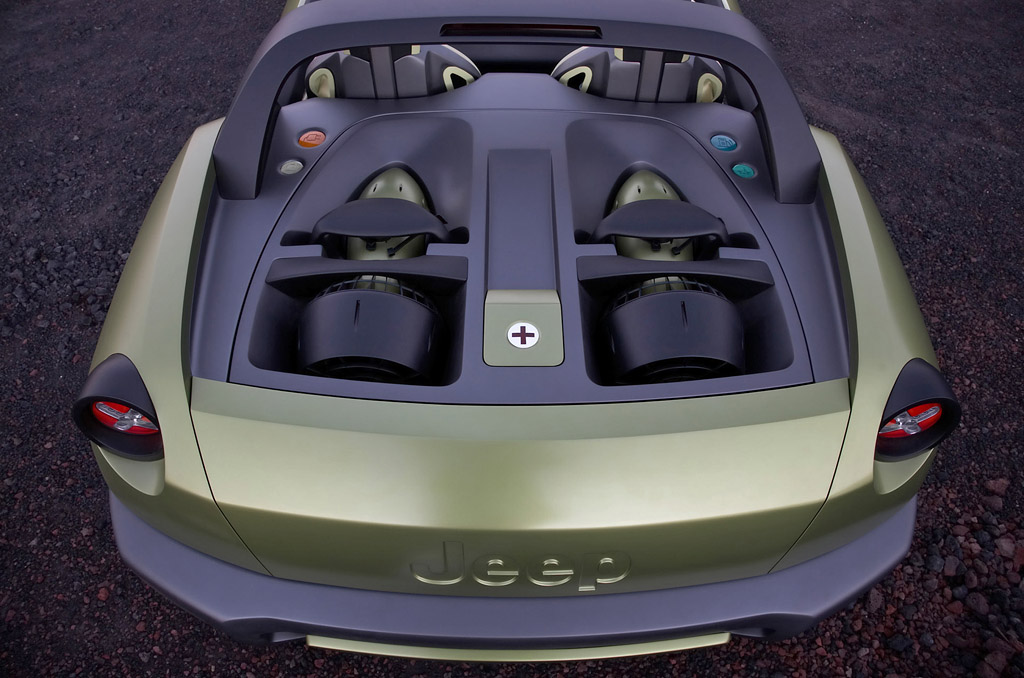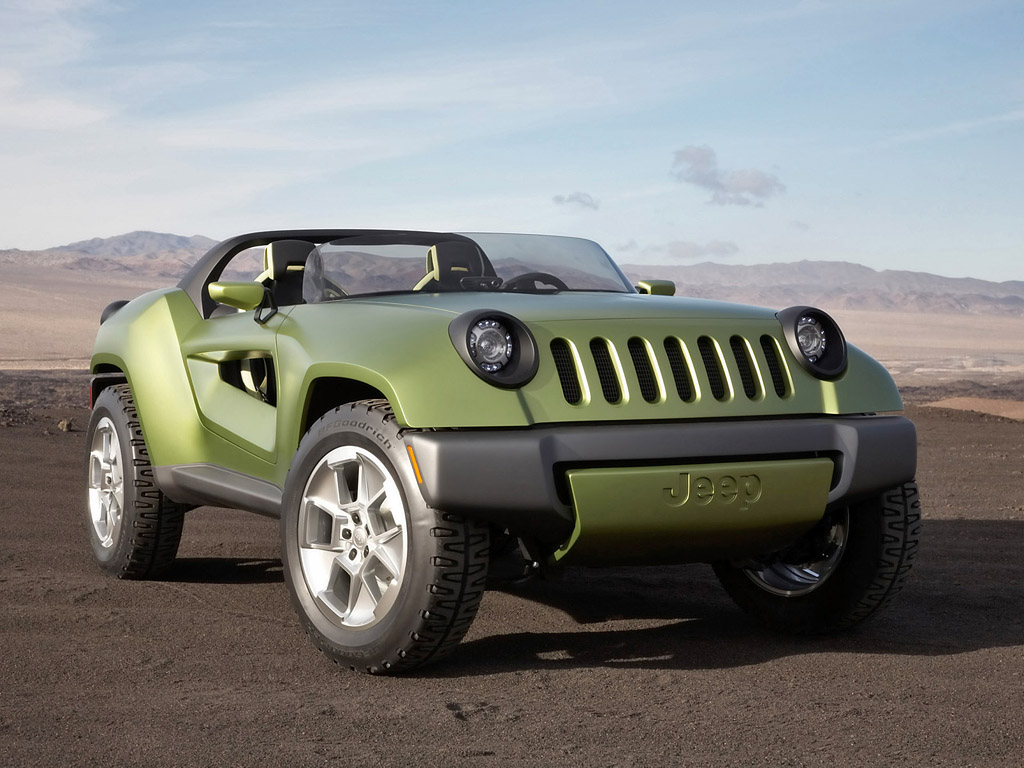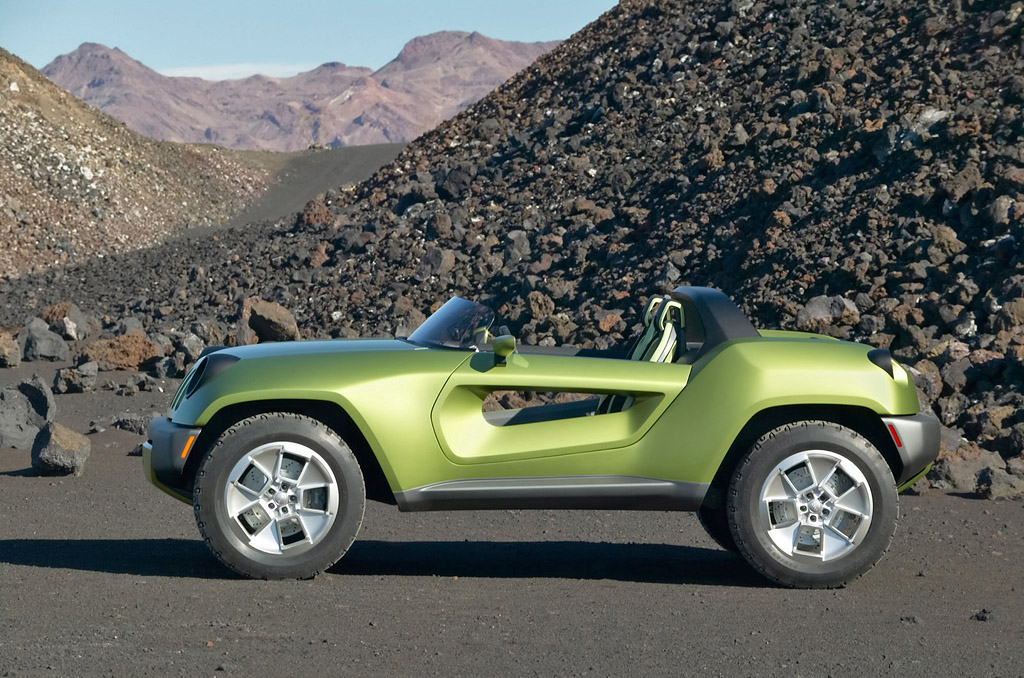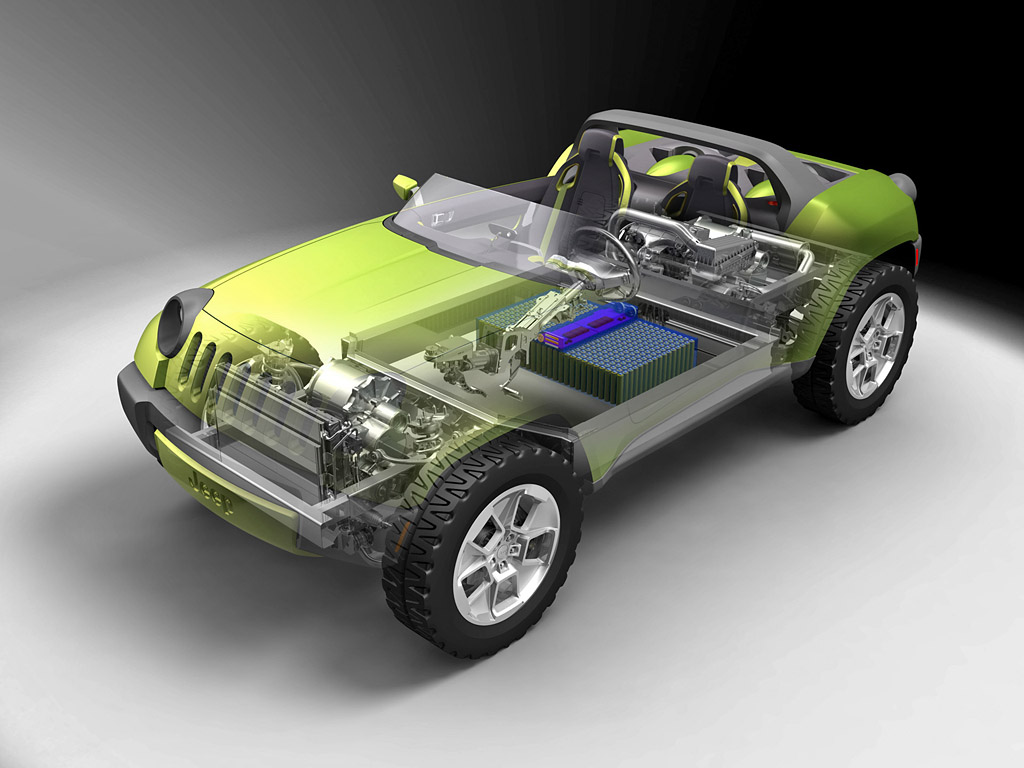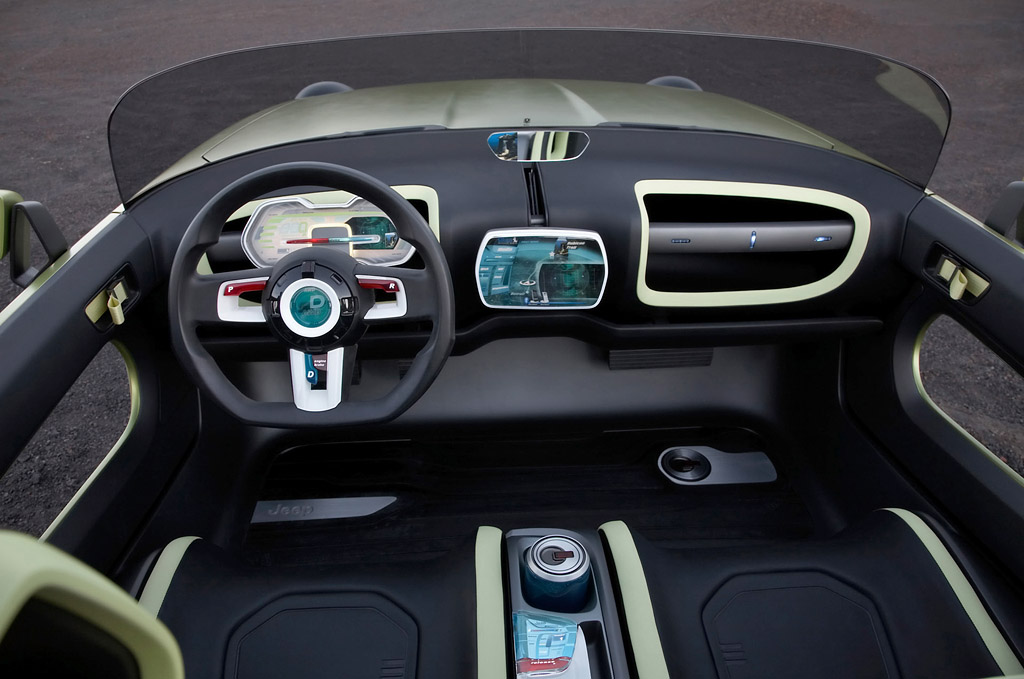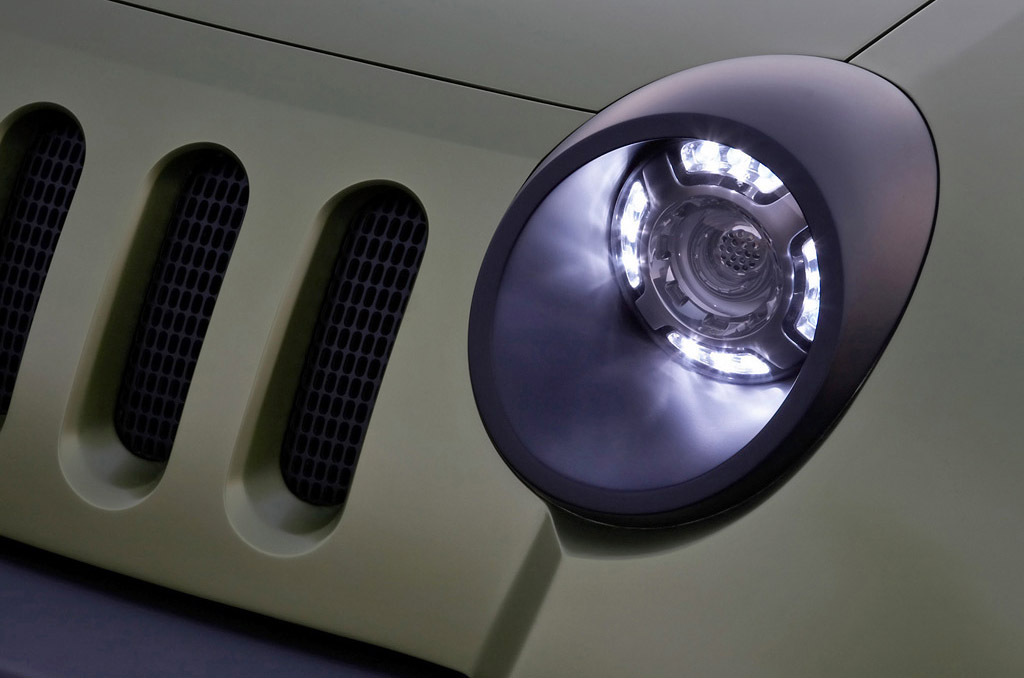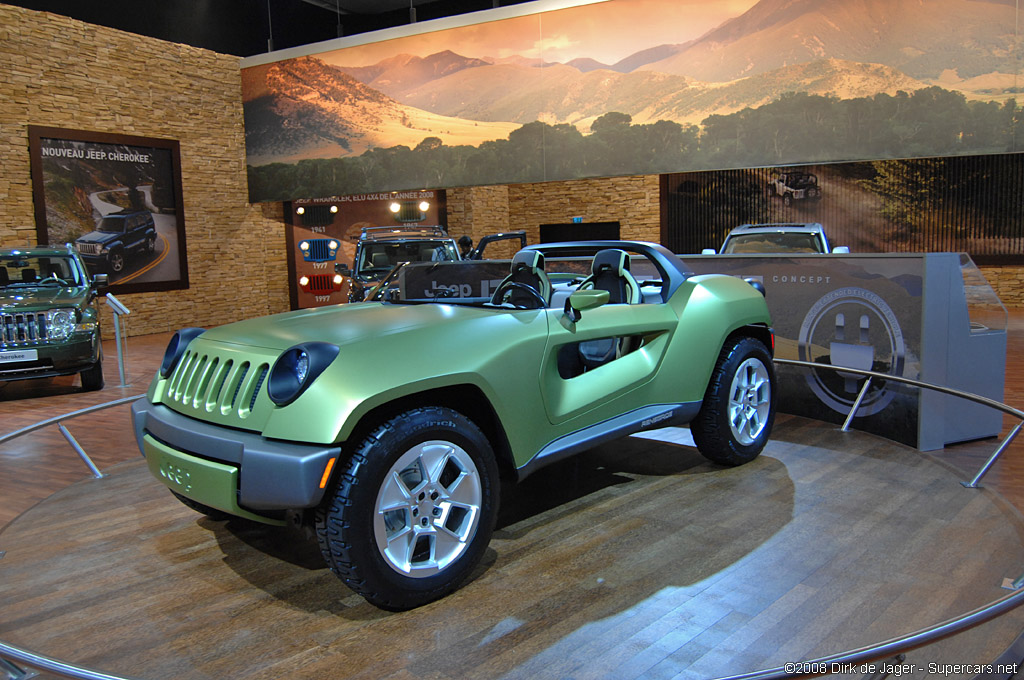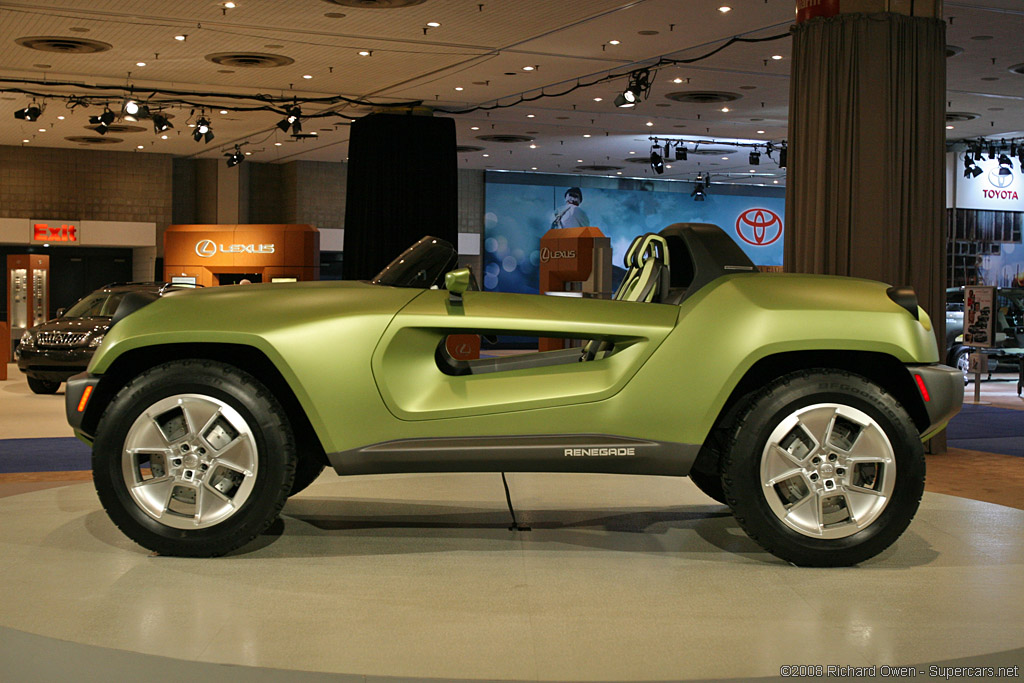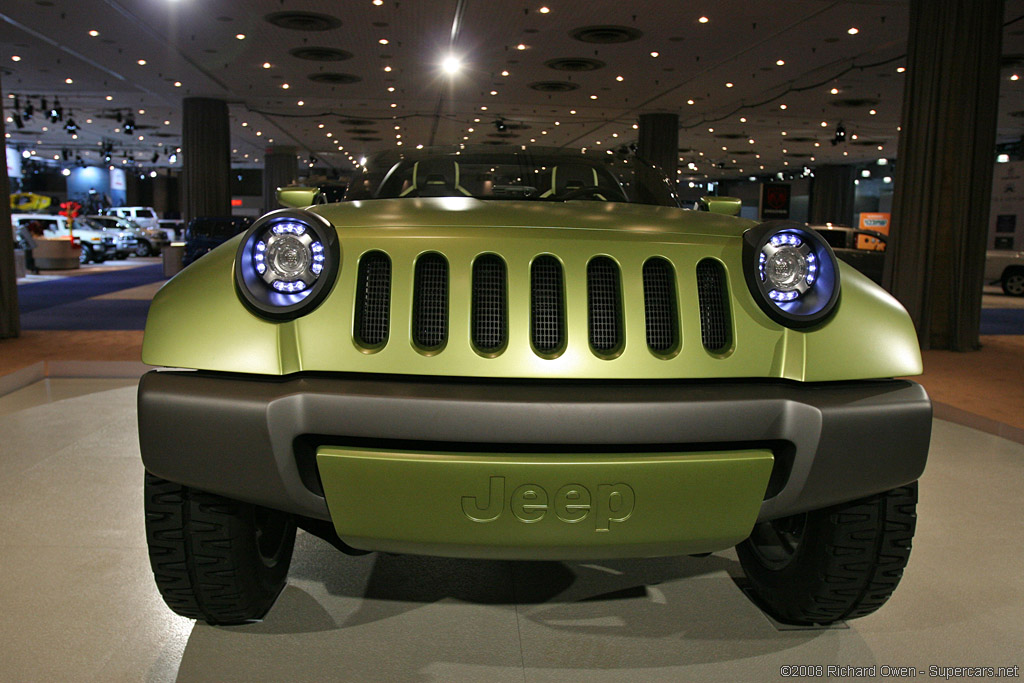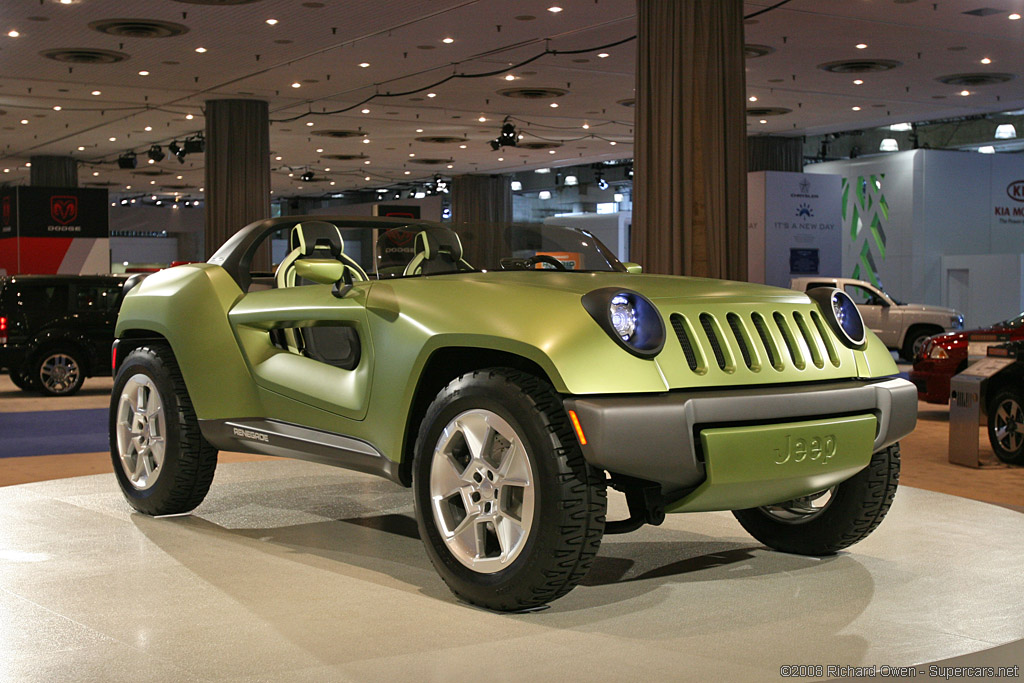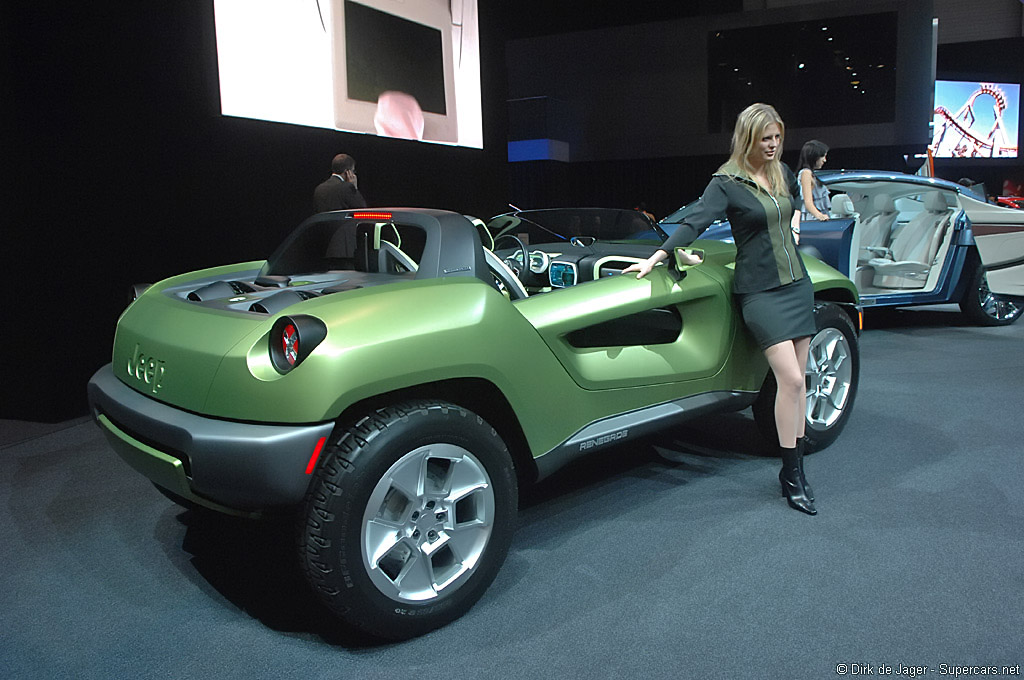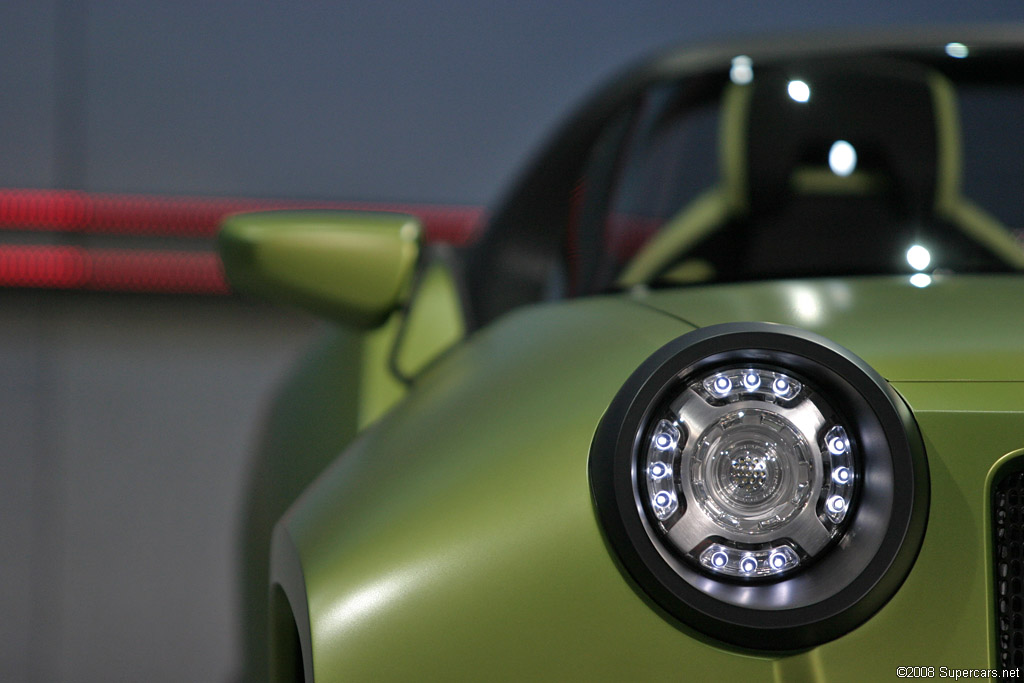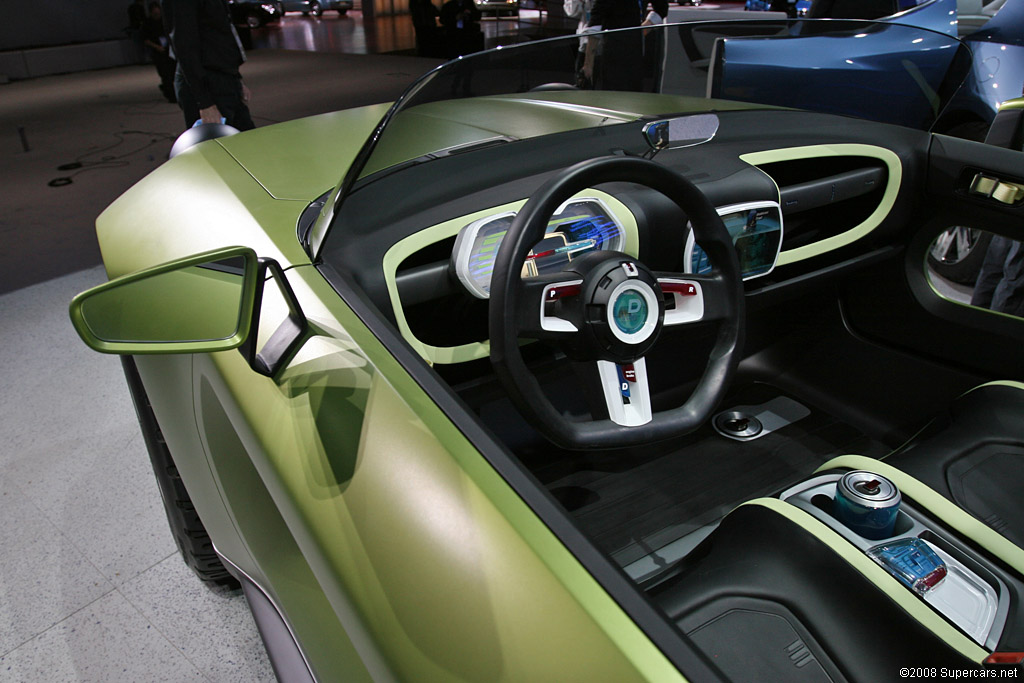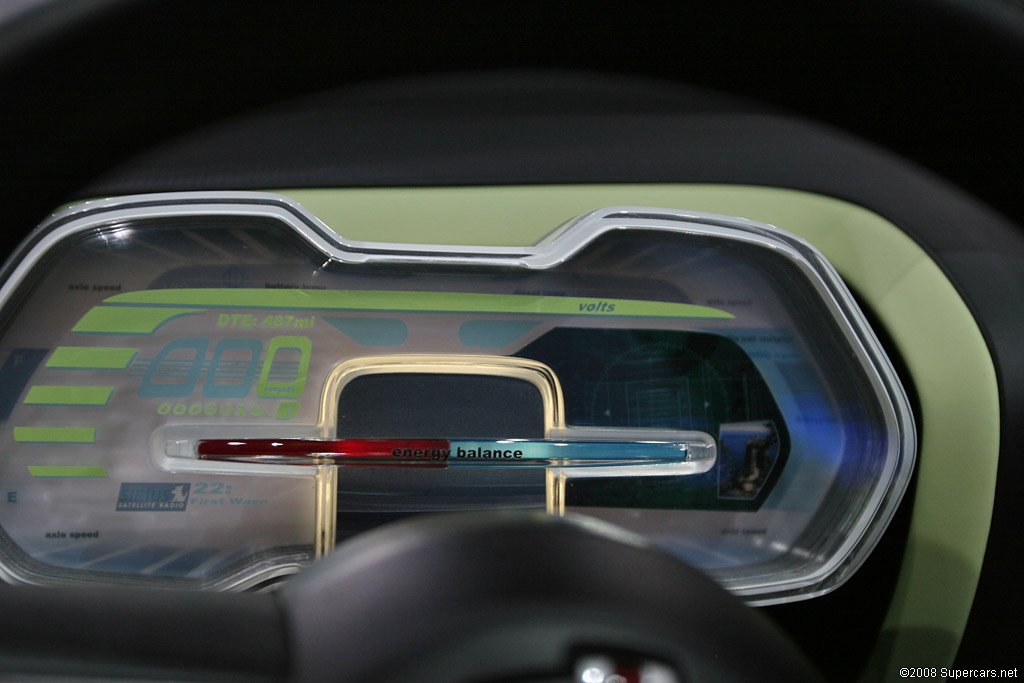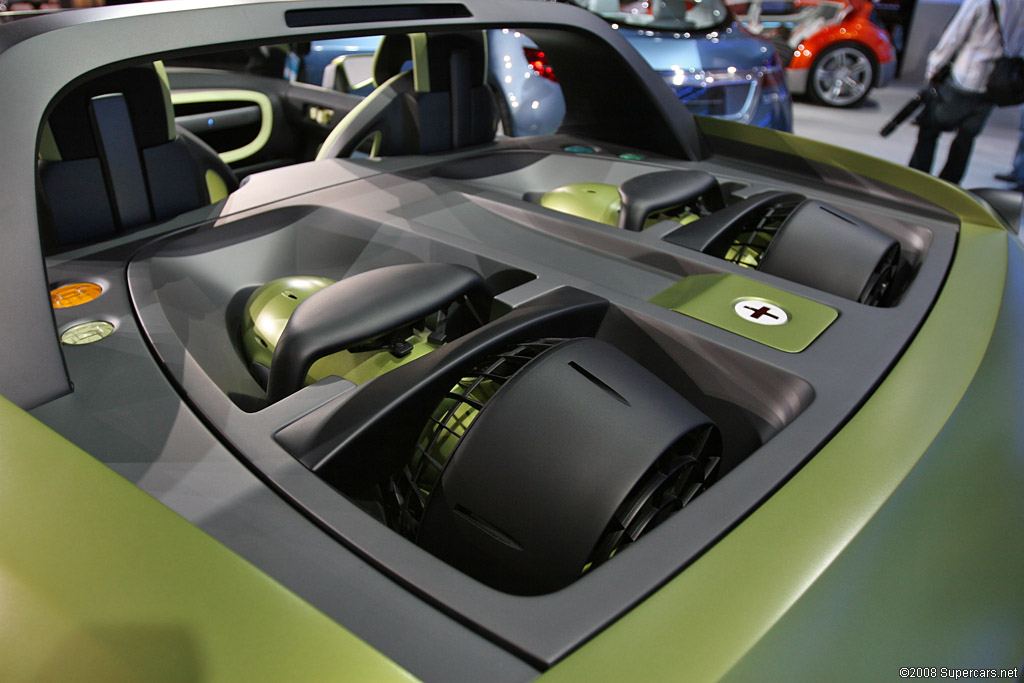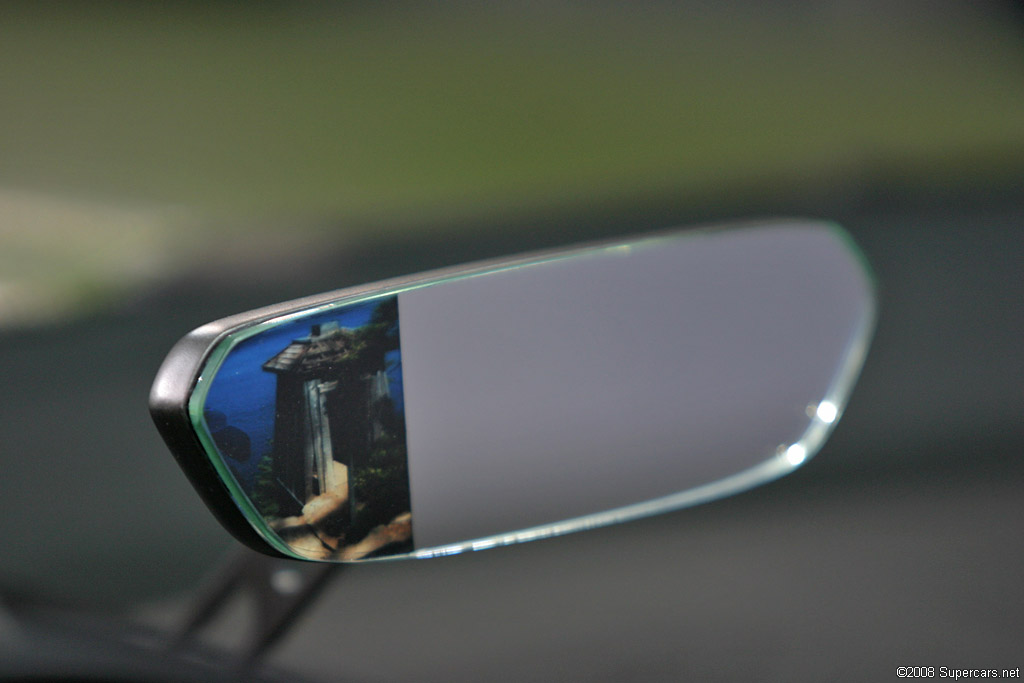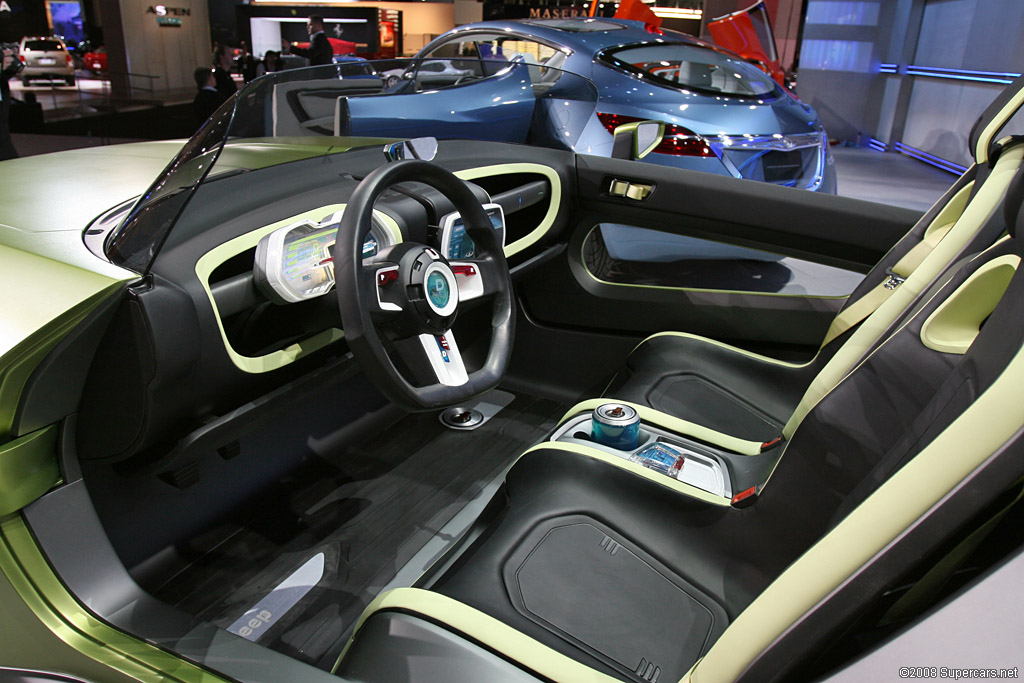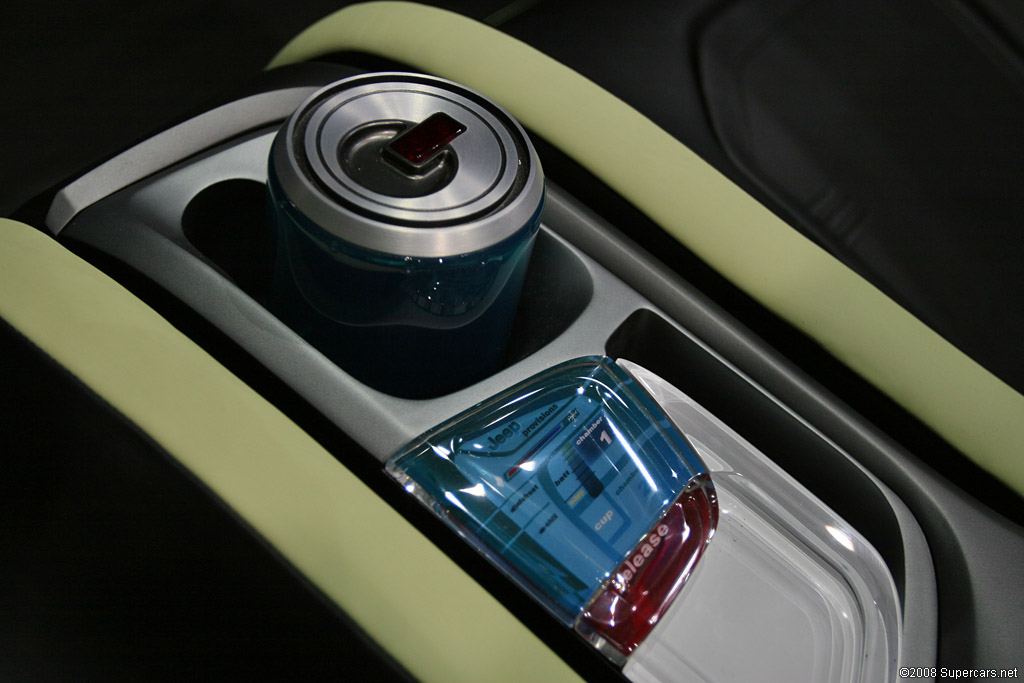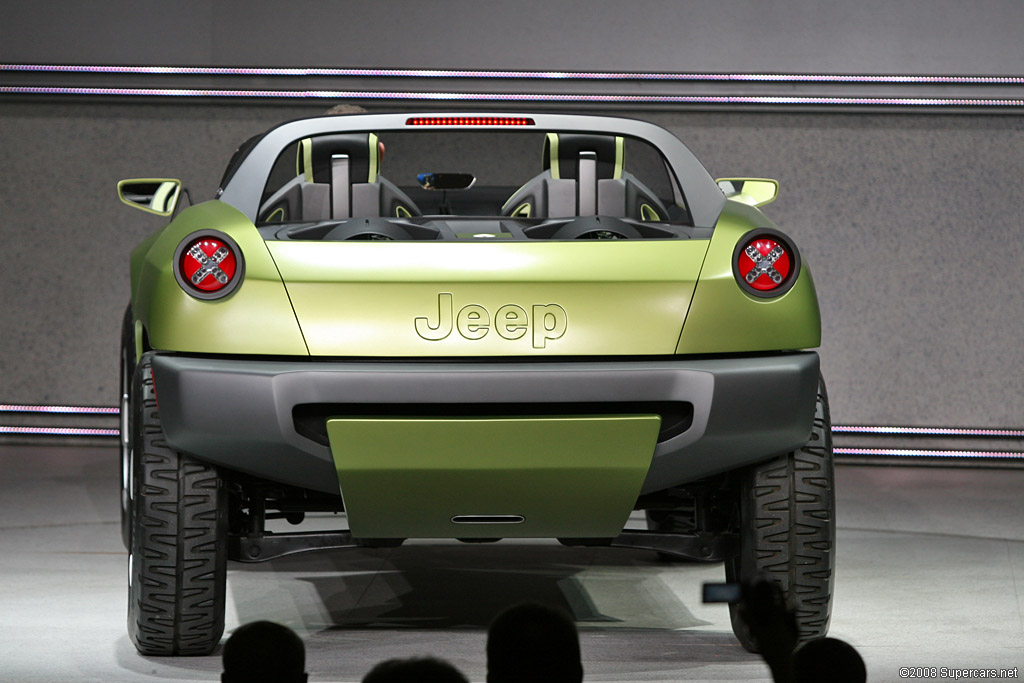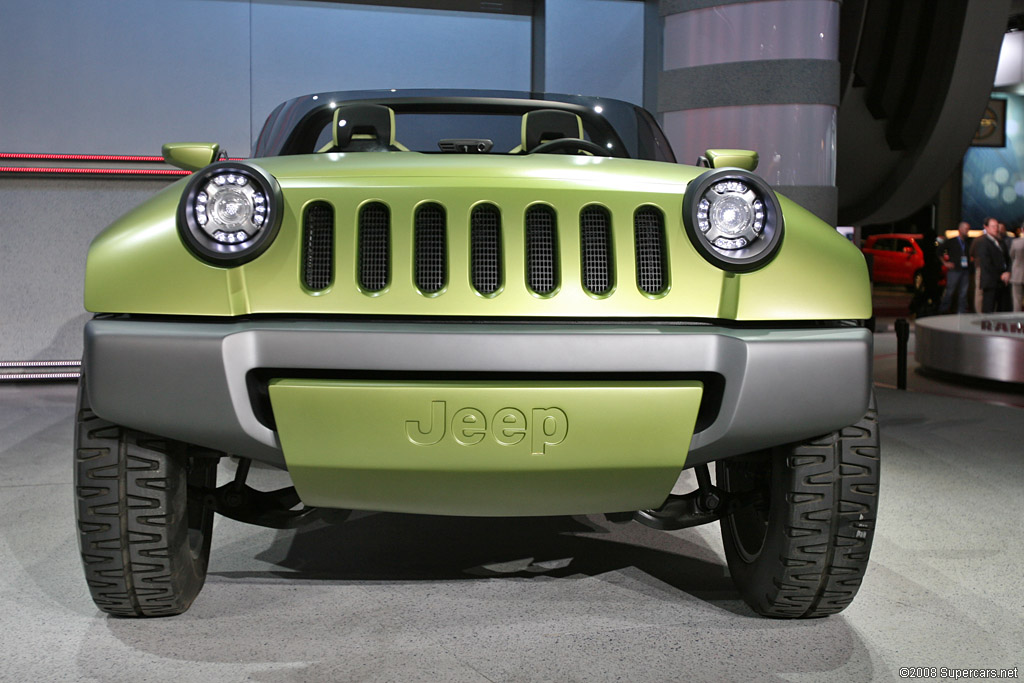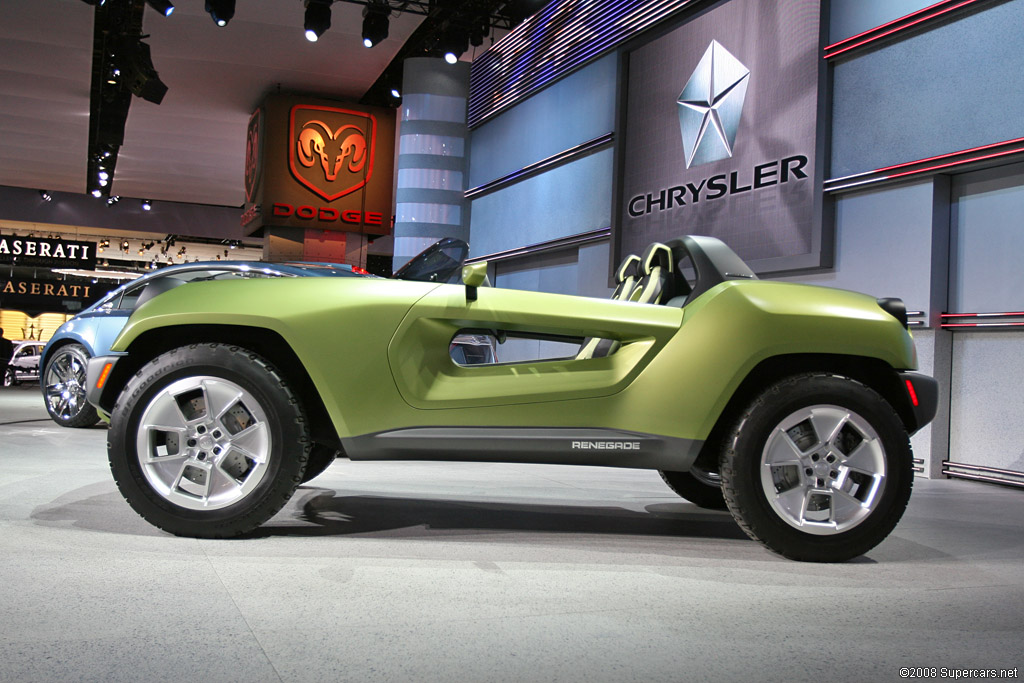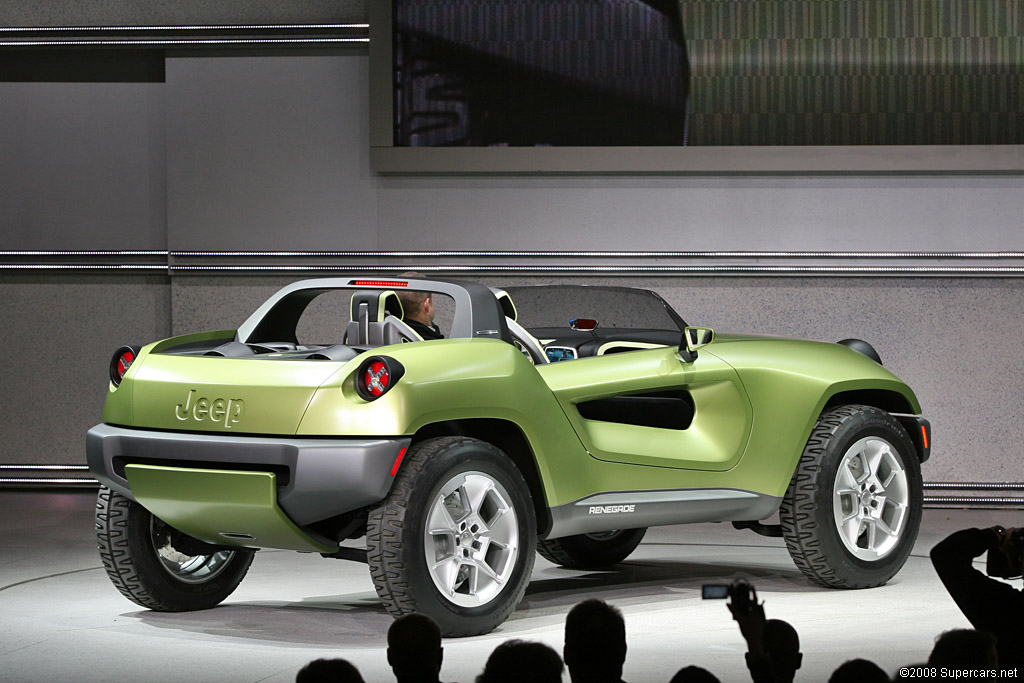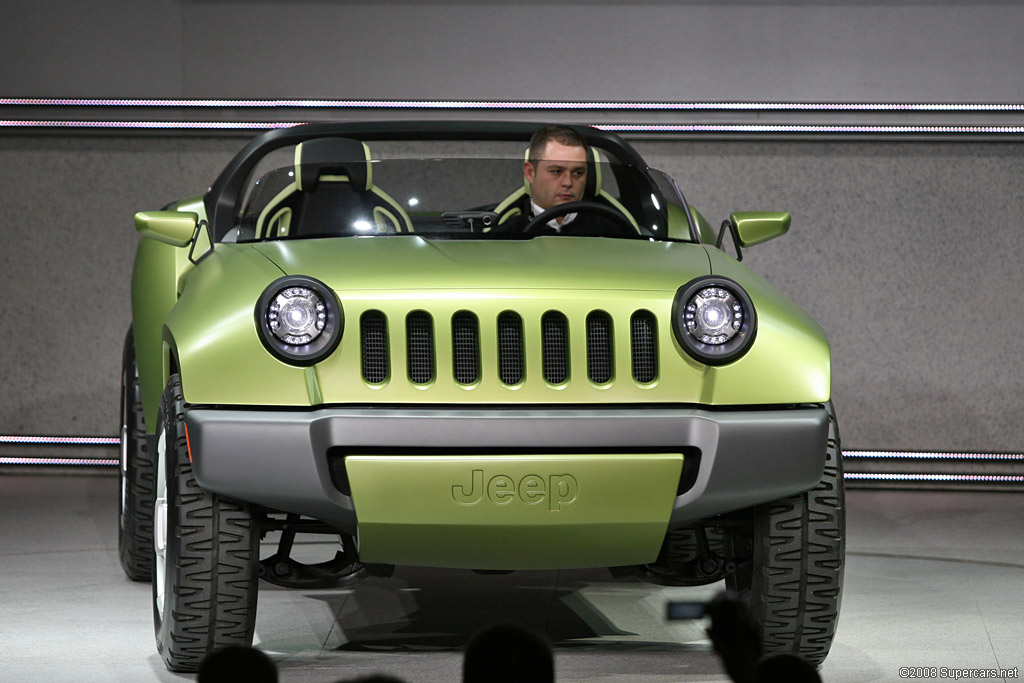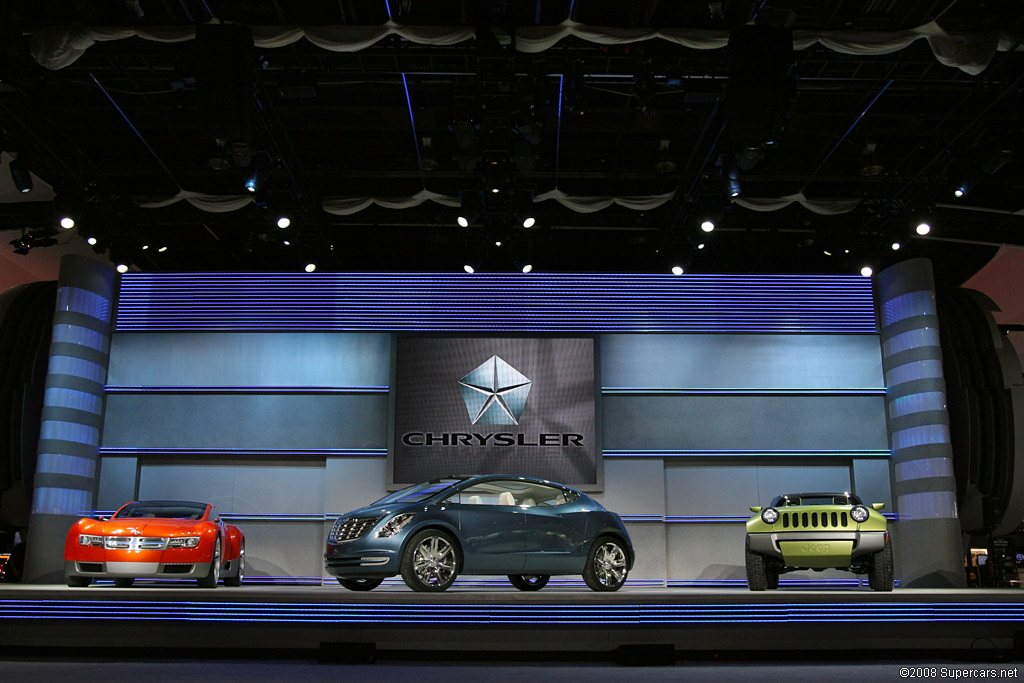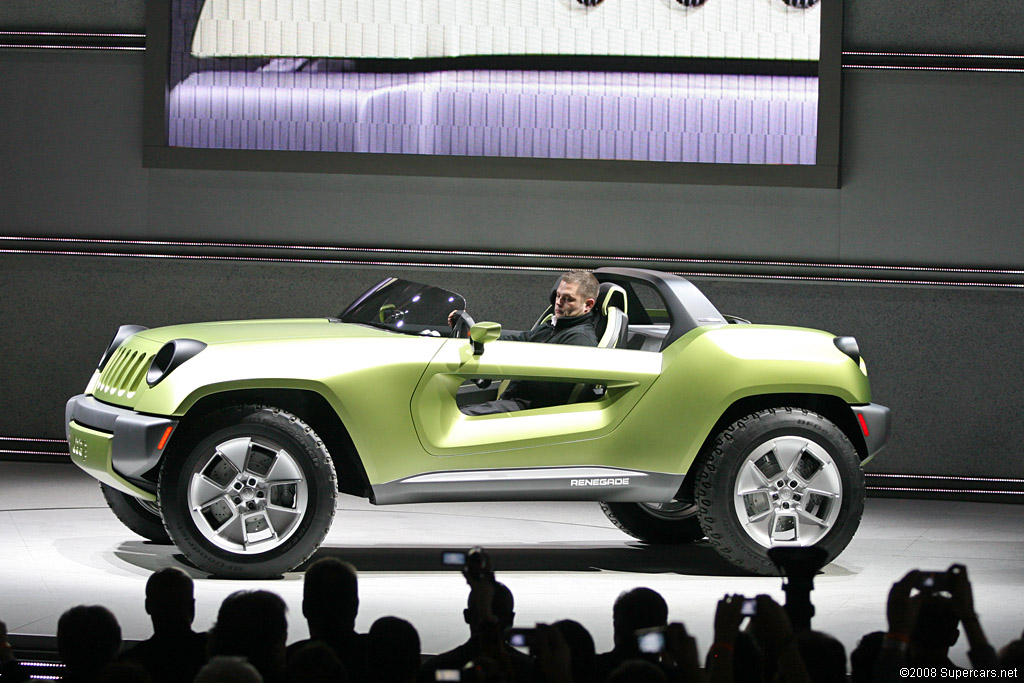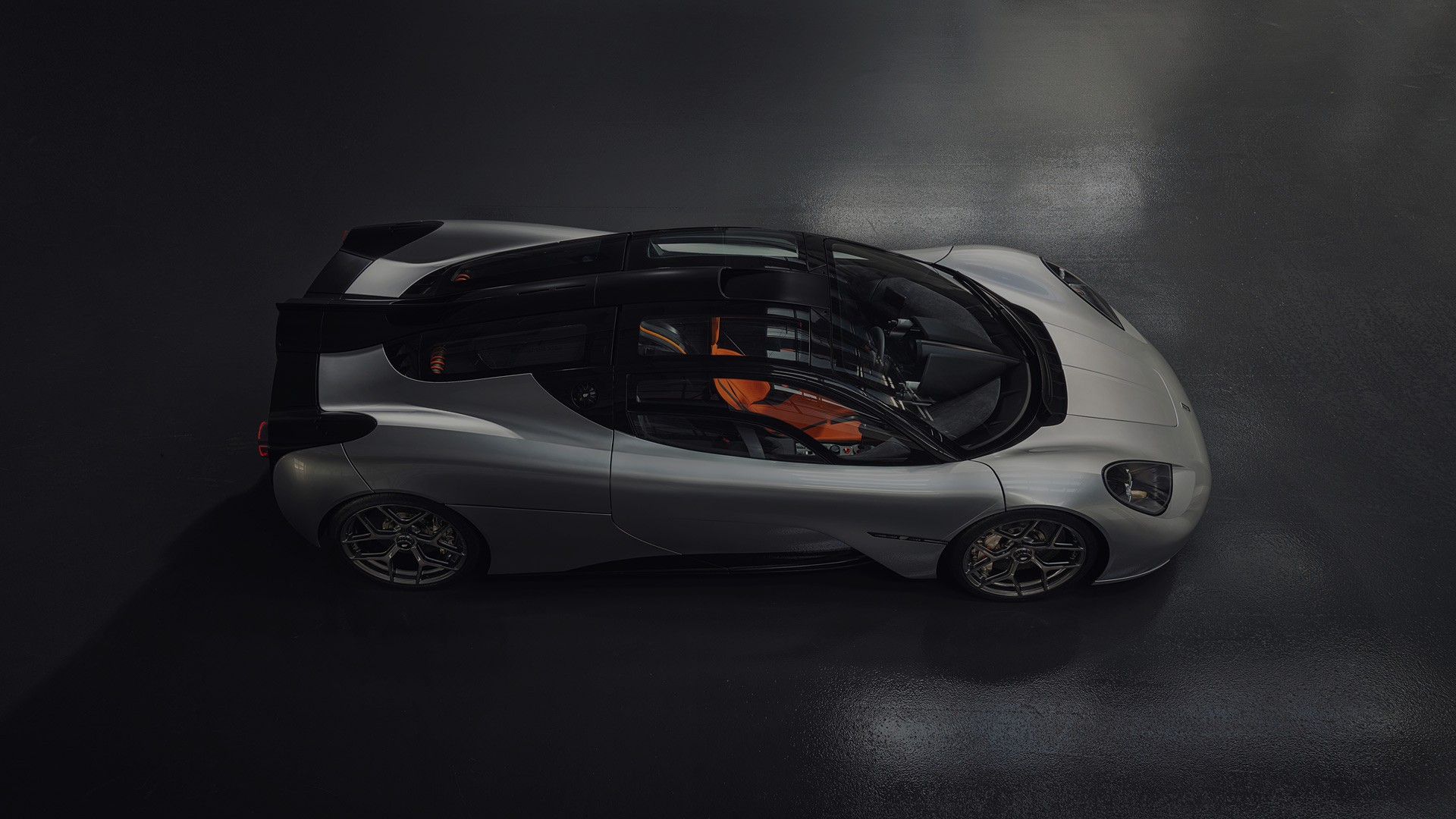2008 Jeep Renegade Concept
Detroit, Jan 14, 2008 – A B-segment Jeep® concept vehicle, the Renegade is a sporty, “minimized” two-seater ideally suited for the all-weather fun of dune-surfing or rock-crawling.
“With an electric motor powering each axle, the Jeep Renegade concept is designed for a ‘hang on and have fun experience,’” said Tony Shamenkov, Jeep Renegade concept principal exterior designer.
Constructed of environmentally responsible materials, sustainability is a key theme of the Jeep Renegade concept.
Renegade is targeted at customers in the “Stylish Green” segment of the marketplace – those who are extremely environmentally oriented, appreciate high-tech and innovation, and enjoy performance combined with style in keeping with their “green” attitude.
Jeep Renegade Concept Technology The advanced propulsion system in the Jeep Renegade concept starts with a 40-mile lithium-ion battery pack. A range extender – in Renegade’s case, a small-displacement (1.5-liter, 3-cylinder) BLUETEC diesel engine – allows for journeys beyond 40 miles. In fact, the Jeep Renegade concept boasts a 400-mile range.
Renegade’s BLUETEC diesel engine generates an additional 115 horsepower when needed, while greatly reducing exhaust emissions when compared to standard gasoline engines. Renegade is capable of achieving an equivalent petroleum fuel economy of 110 miles per gallon, which is four-to-five times greater than an equivalent gasoline-only vehicle.
The all-new Jeep Renegade concept’s lightweight aluminum architecture and regen-braking system help to improve overall efficiency, while dual electric 200 kilowatt (268 horsepower) motors propel a very capable 4×4 system – complete with low range and locking differentials — worthy of carrying the Jeep name.
Jeep Renegade Concept Exterior The Jeep Renegade concept’s “one-with-nature” personality is emphasized by its large, flaring wheel openings, oversized wheels and tires, and cut-down speedster windshield — all of which combine to deliver on the Renegade’s promise of cross-country fun and agility.
Among the unique exterior details are “deconstructed” rubber-clad headlamps and taillamps, as well as just-for-fun elongated triangular openings in each of the two sculpted doors.
While the Renegade features a roll bar, it has no top. Instead, the cargo deck just behind the cockpit can be fitted with a variety of “lids.” Options include a plain lid, or lids configured to accommodate the gear of a particular outdoor day-trip activity, such as mountain biking or kayaking. Or it can come “as built” — with formations designed to accommodate two matching water scooters with open storage underneath. Fluid-fill caps, a plug-in port and a first-aid kit are also included.
Jeep Renegade Concept Interior Sustainability – a ratio between the energy needed to build and ship the vehicle as compared with the impact these processes have on the environment – is a key focus of the Jeep Renegade concept’s interior design.
Materials used in constructing the Jeep Renegade concept were deliberately selected to be environmentally responsible, both in manufacture and end-of-vehicle-life recyclability.
Innovative construction includes one-piece molded soy-based foam seats and doors, a one-piece co-molded instrument panel with a urethane skin, a co-molded aluminum/silicone steering wheel, a one-piece molded chassis created without using environmentally-harmful resins, and a one-piece molded interior compartment “tub.” This environmental care in designing the Renegade’s interior is aligned with Jeep’s “harmony with nature” philosophy.
“The Jeep Renegade concept’s interior — actually the entire vehicle — is designed to minimize the number of parts necessary for assembly and function,” said Scott Anderson, principal interior designer of the Renegade concept. “We designed the Renegade with an eye toward simplification of systems, both in parts and processes.”
The HVAC system, for example, is not coolant-based, while the color, grain and gloss of the interior parts are molded in one piece. Even the no-gloss exterior color of the Renegade’s lightweight composite body is molded in to avoid the use of solvents present in automotive paints.
The dual-cockpit instrument panel is symmetrically balanced for easy “plug and play” left-hand drive and right-hand drive applications. There is no conventional wiring. Instead, the instrument panel features wireless electronics in sealed, self-contained units, removable by the customer. The panel is built about an exposed cross-car beam containing an integrated power strip, and on the passenger side, yaw, pitch and roll indicators (also built into the fluid-fill gauges). The instrument panel itself is hollow, allowing ample open storage below the beam. Separately-configured impact-absorbing vinyl-wrapped knee-blockers “float” beneath the cross-car beam. The thin multi-plane acrylic instrument cluster mounts to the steering column, while the similar but separate center control screen mounts on a swivel base — providing easy access to both occupants.
Located at the intersection of the steering wheel’s T-shaped spokes, the circular LED screen rotates, allowing the driver to select the drive mode, while a flattened rim provides roomier thigh clearance. A driver air bag is concealed beneath the screen. Red or green translucent shift buttons allow Park, Reverse or Drive selections.
The Jeep Renegade concept’s sporty doors incorporate unique canvas-pull remote “handles,” while the rush of the moving landscape visible through the door’s elongated openings enhance the feeling of carefree, open-air mobility.
The Renegade’s contoured, figure-form seats — covered in scuba-like waterproof materials that are both soft-touch and flexible — feature in-seat belts and unusual, hollow, lightweight upside-down “U-shaped” headrests. The seats feature a urethane skin with soy-based foam co-molded with a composite substructure. The integral seatbelts, along with slender accent strips on the seats and instrument panel, repeat the Palm Metallic exterior color.
A “thermal unit” in the center console plugs into the electrical battery pack, permitting food to be either heated or cooled.
“Inspired by the simplicity and functionality of scuba diving gear, we wanted the interior of the Jeep Renegade concept to be weather-tight and durable,” Anderson said.
The Renegade’s wireless interior is designed to be hosed down. It features a drain in the floor, while the formations built into the floor mat are designed to channel water to the opening. Hollow-section billet-formed pedals float above the tub floor.
Fun, functional and fabricated from recyclable materials, the Jeep Renegade concept offers agile, capable performance without sacrificing the environment its drivers seek to explore. Keeping with Jeep owners’ desire to use their vehicles as an extension of their active lives, the Jeep Renegade concept promotes enjoyment of the good things of the earth while taking care of its future.
In Detail
| engine | Dual Electric |
| power | 400.4 kw / 537 bhp |
| bhp/weight | 187.54 bhp per tonne |
| driven wheels | 4WD |
| front tires | 235/65R20x7.5 BF Goodrich |
| rear tires | 235/65R20x7.5 BF Goodrich |
| f brake size | mm / in |
| r brake size | mm / in |
| f suspension | Short-Long Arms |
| r suspension | Multi-Link |
| curb weight | 1429 kg / 3150 lbs |
| wheelbase | 2581 mm / 101.6 in |
| front track | 1580 mm / 62.2 in |
| rear track | 1580 mm / 62.2 in |
| length | 3886 mm / 153 in |
| width | 1598 mm / 62.9 in |
| height | 1430 mm / 56.3 in |
| gear ratios | :1 |
| top speed | ~144.8 kph / 90 mph |
| 0 – 60 mph | ~8.5 seconds |
| 0 – 1/4 mile | ~13.6 seconds |


